| More Ngorongoro |
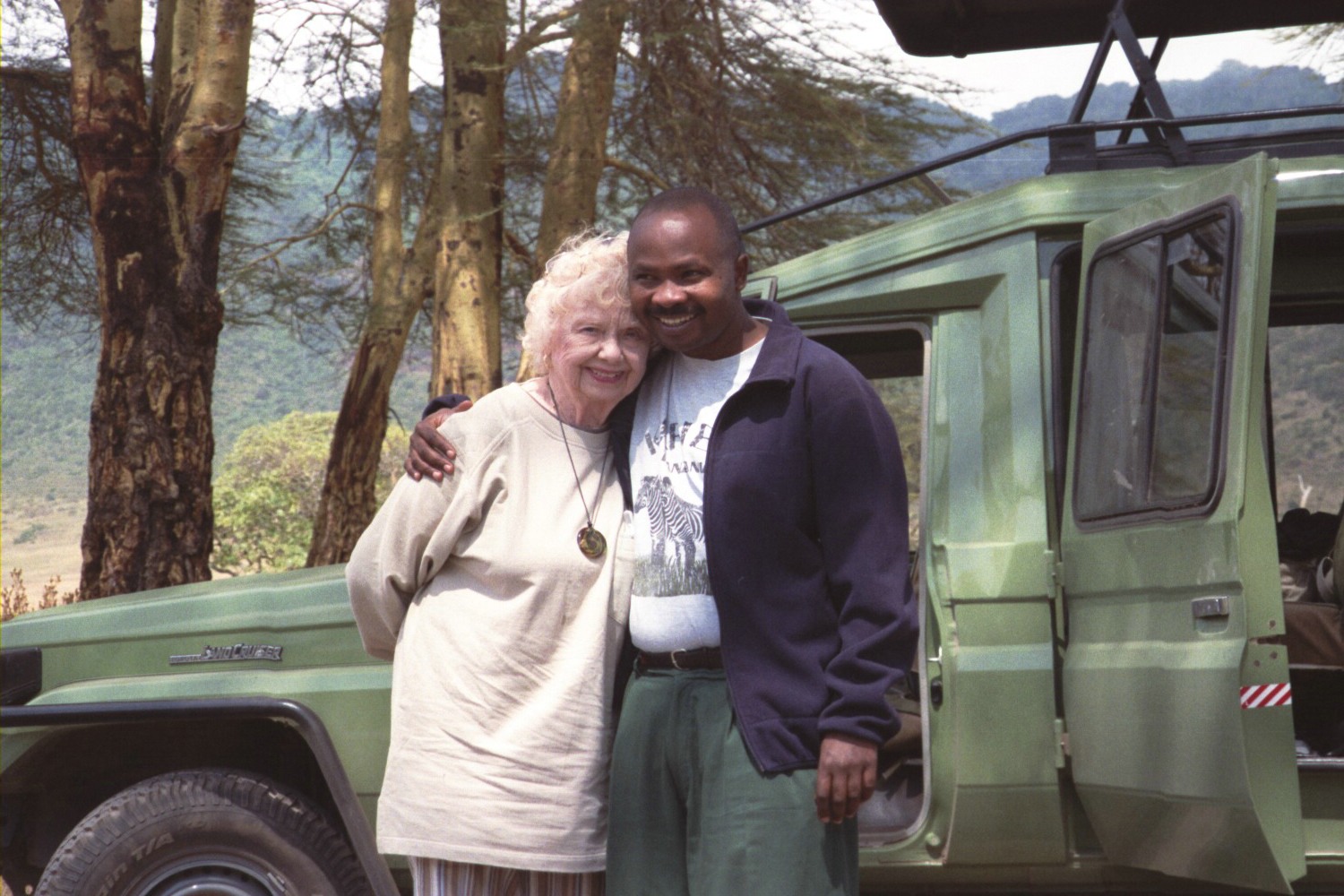 |
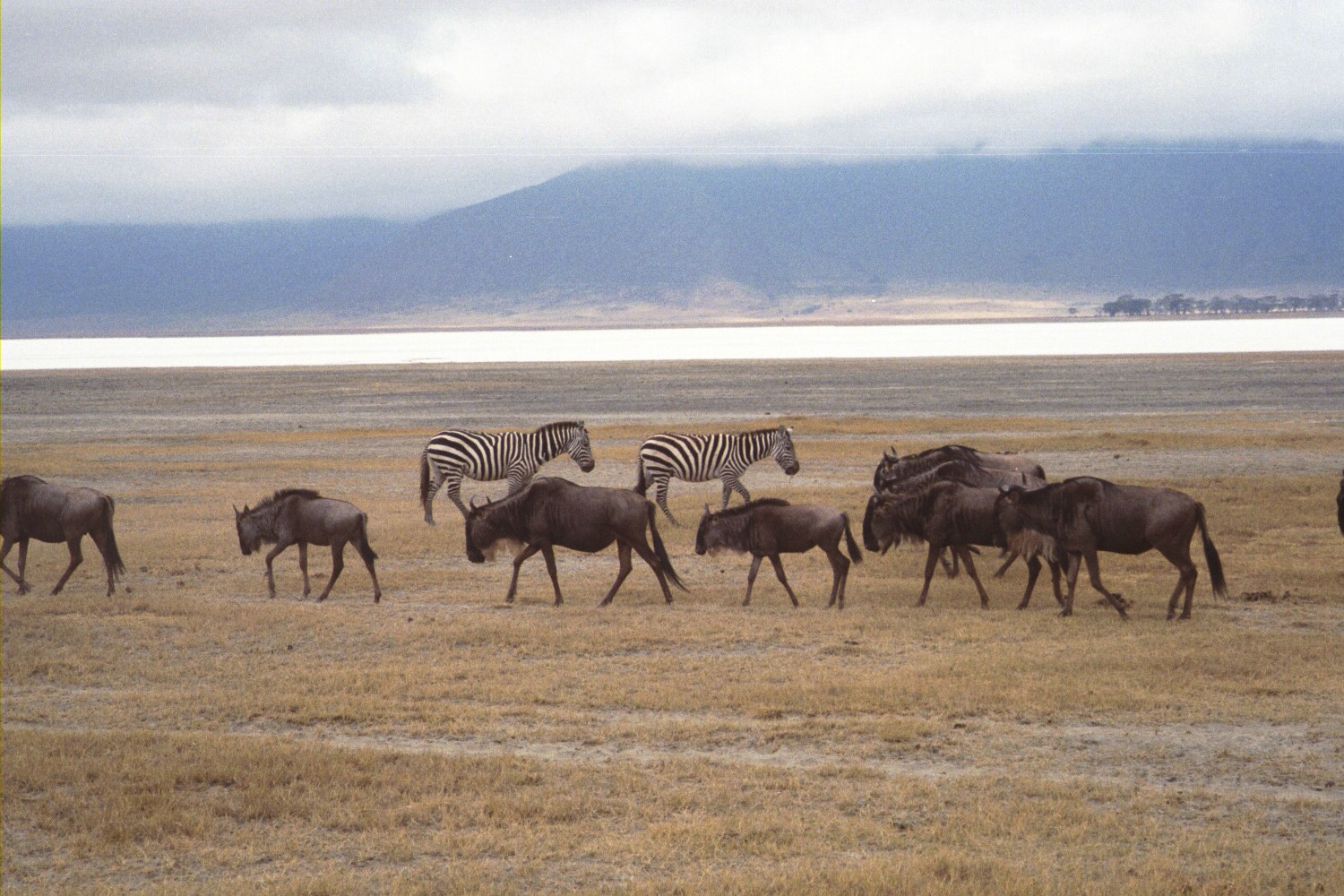 |
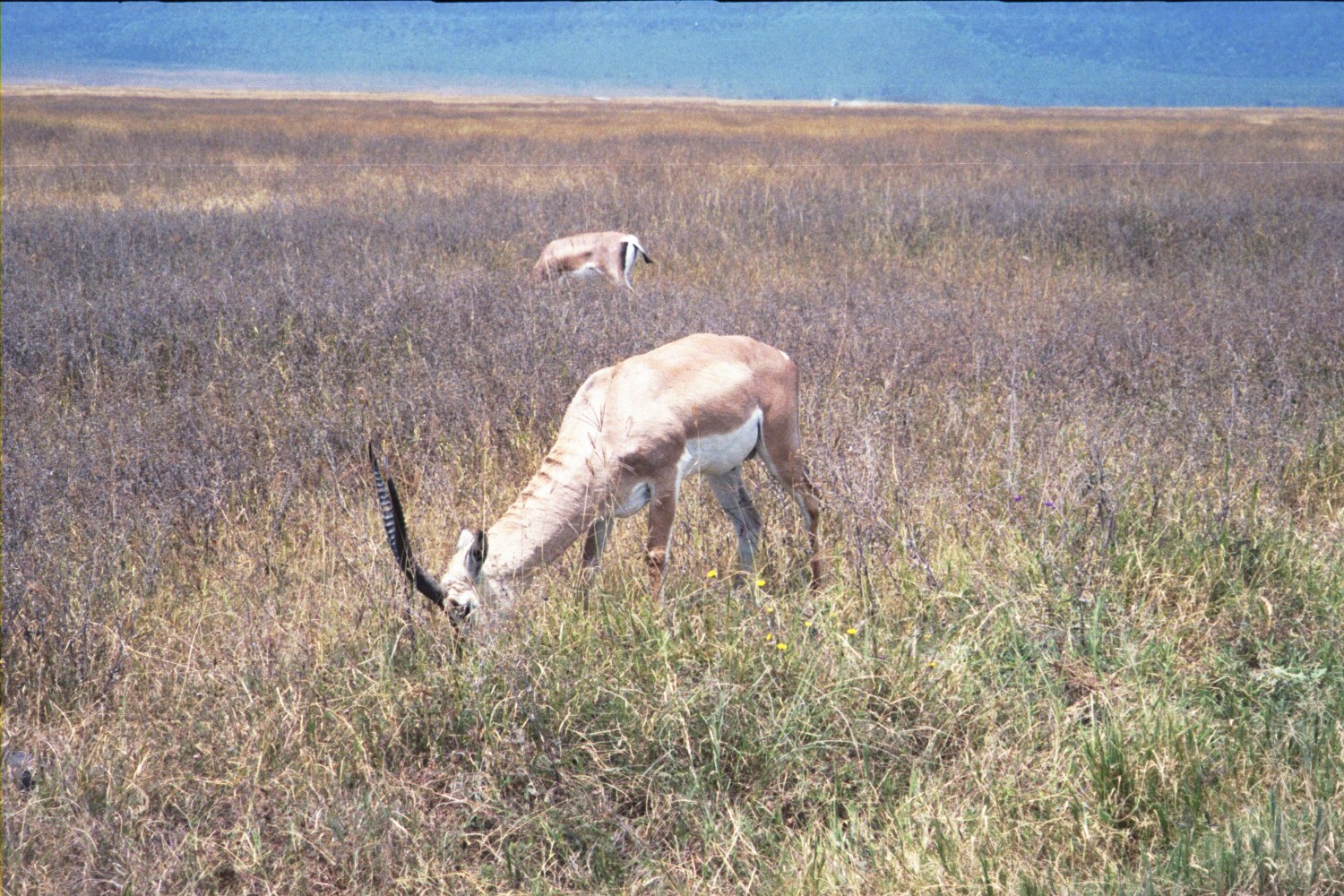 |
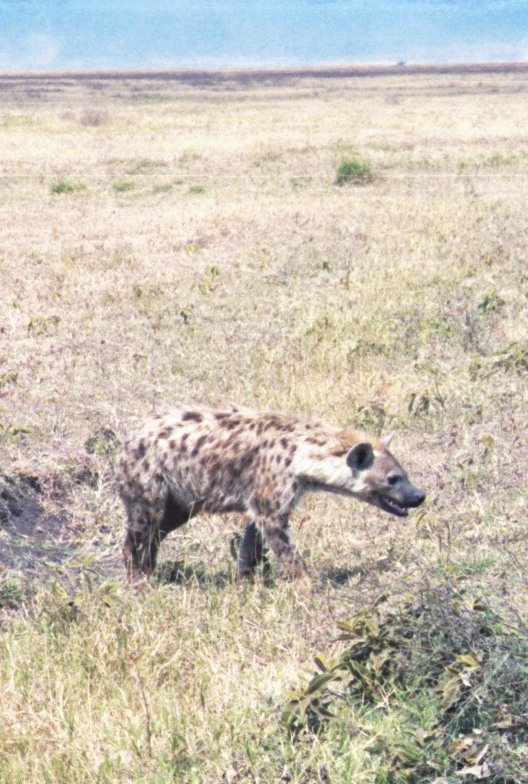 |
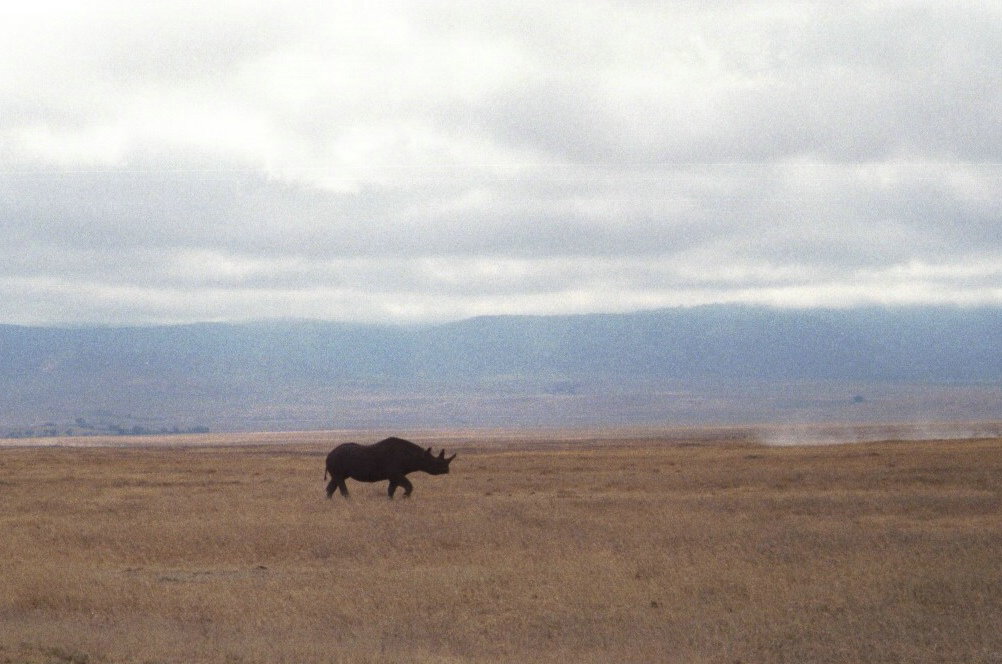 |
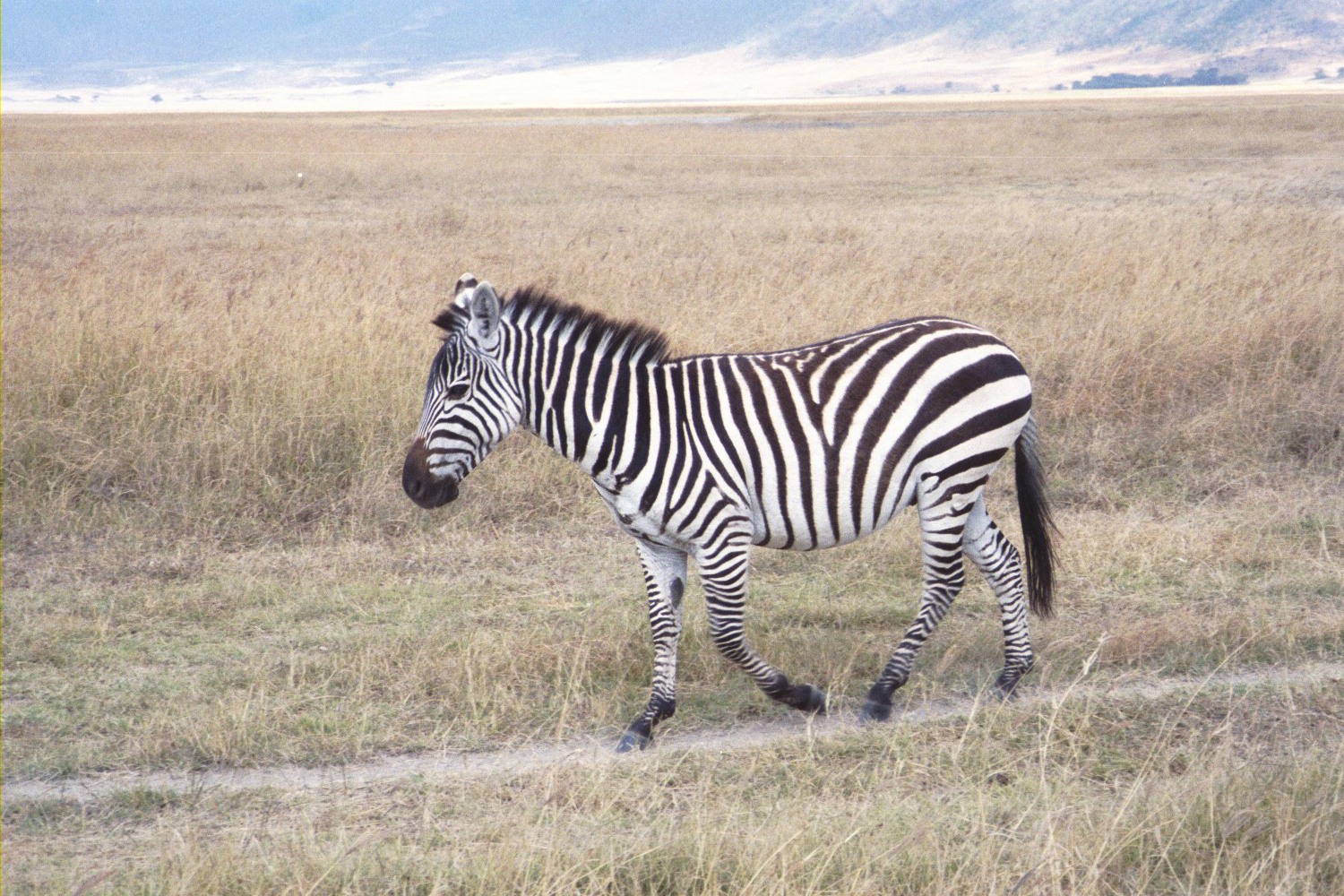 |
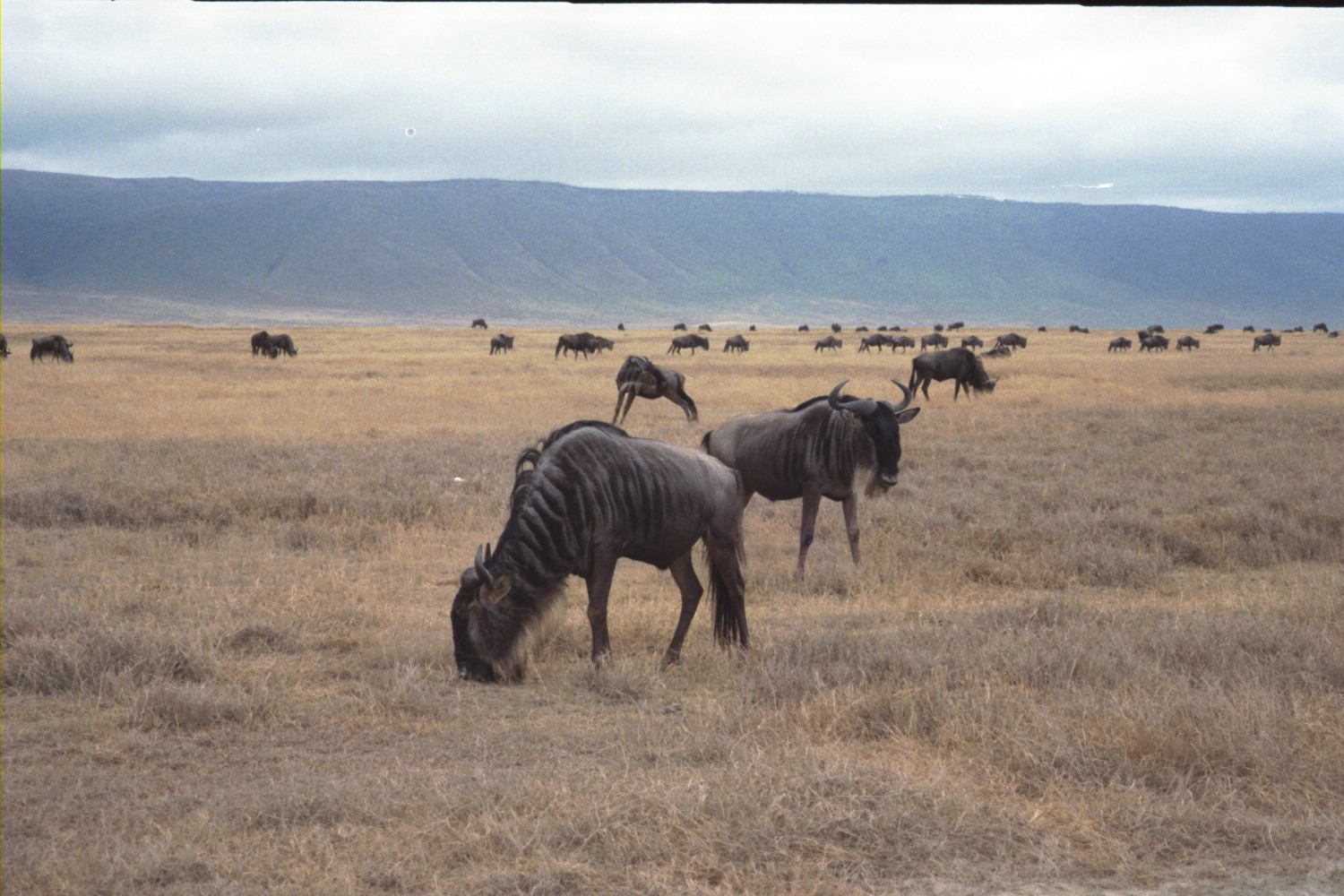 |
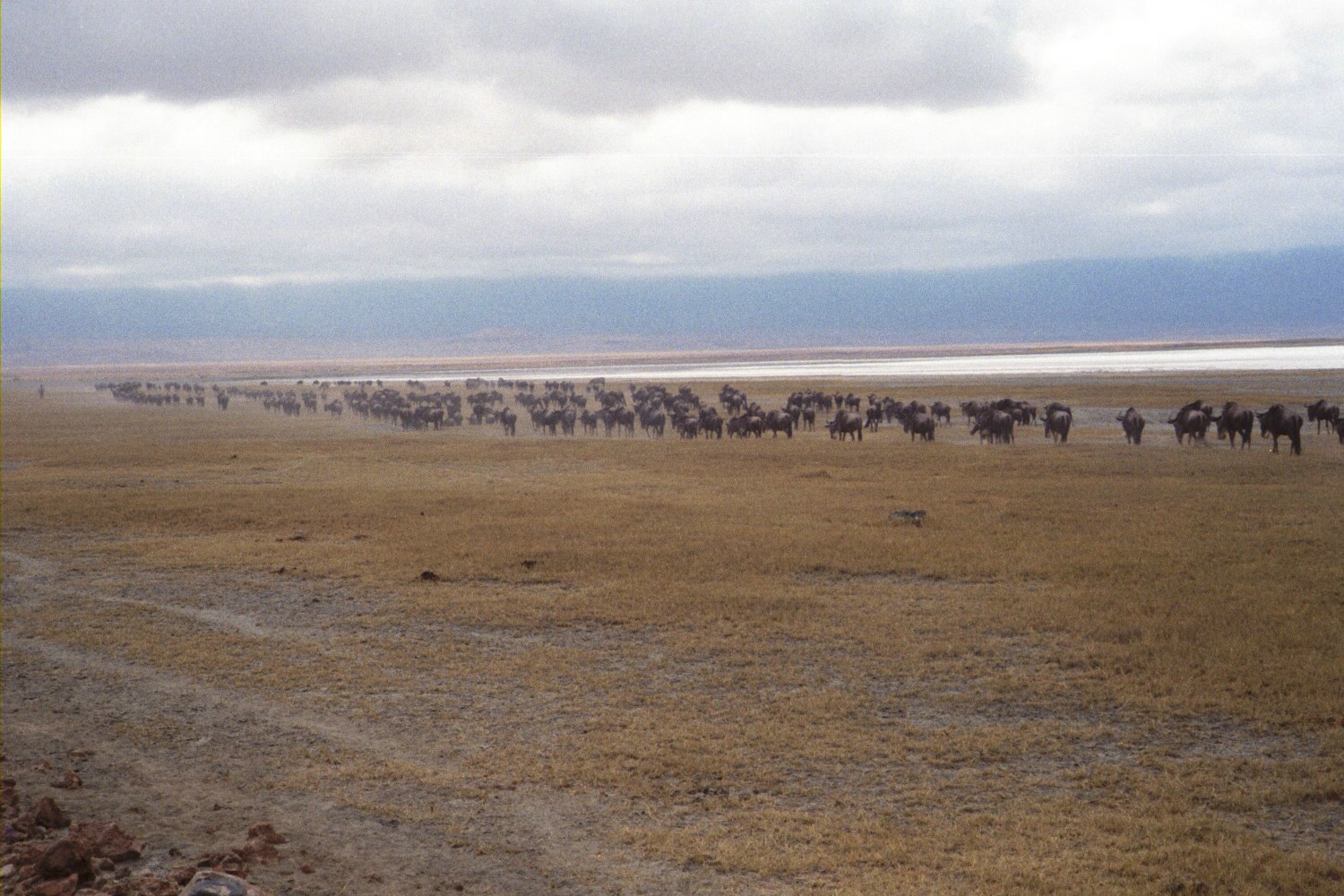 |
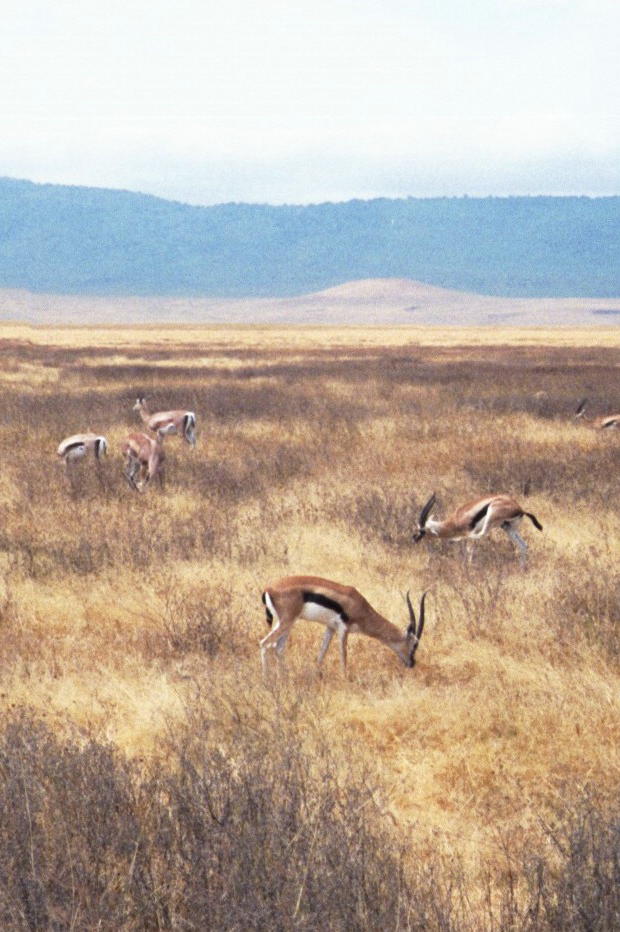 |
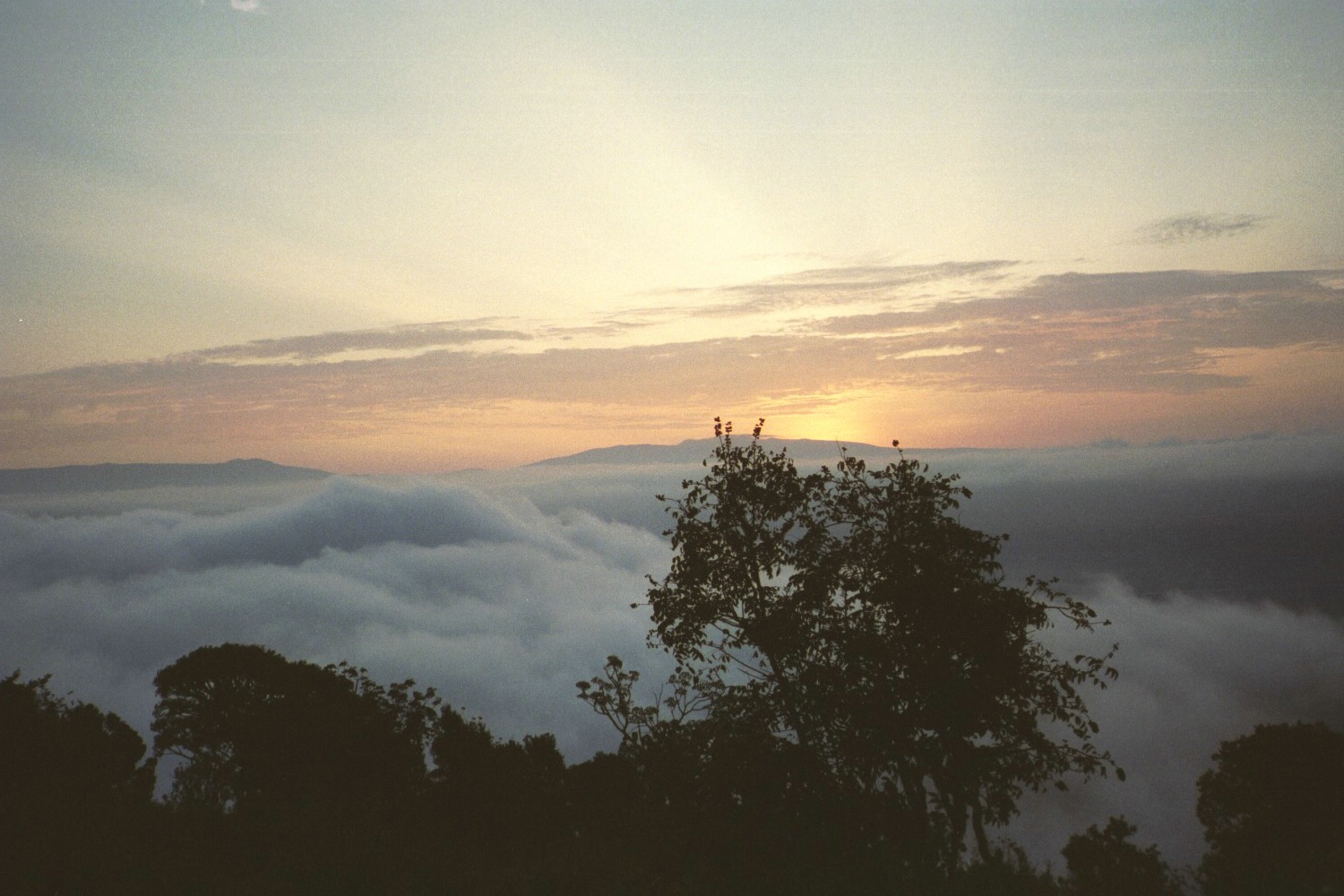 |
| The crater was full of wildebeasts that were not taking part in the annual migration this year. Some stay in the crater permanently, while others may stay for just a season. |
| Wildebeasts are antelopes of a peculiarly unattractive variety. We never saw a solitary one. They graze and move from place to place in herds. Augustine, the naturalist traveling with us, explained how important the wildebeasts are to the Serengeti ecosystem: their waste fertilizes the plains while calves and the infirm serve as prey for many larger mammals. |
| When you see wildebeasts, you usually also see many of their best buddies, the zebras. The stripes of zebras serve to disorient and confuse their predators. (Try to imagine the pyschedelic effect of a running herd.) The pattern of each zebra's stripes is unique. |
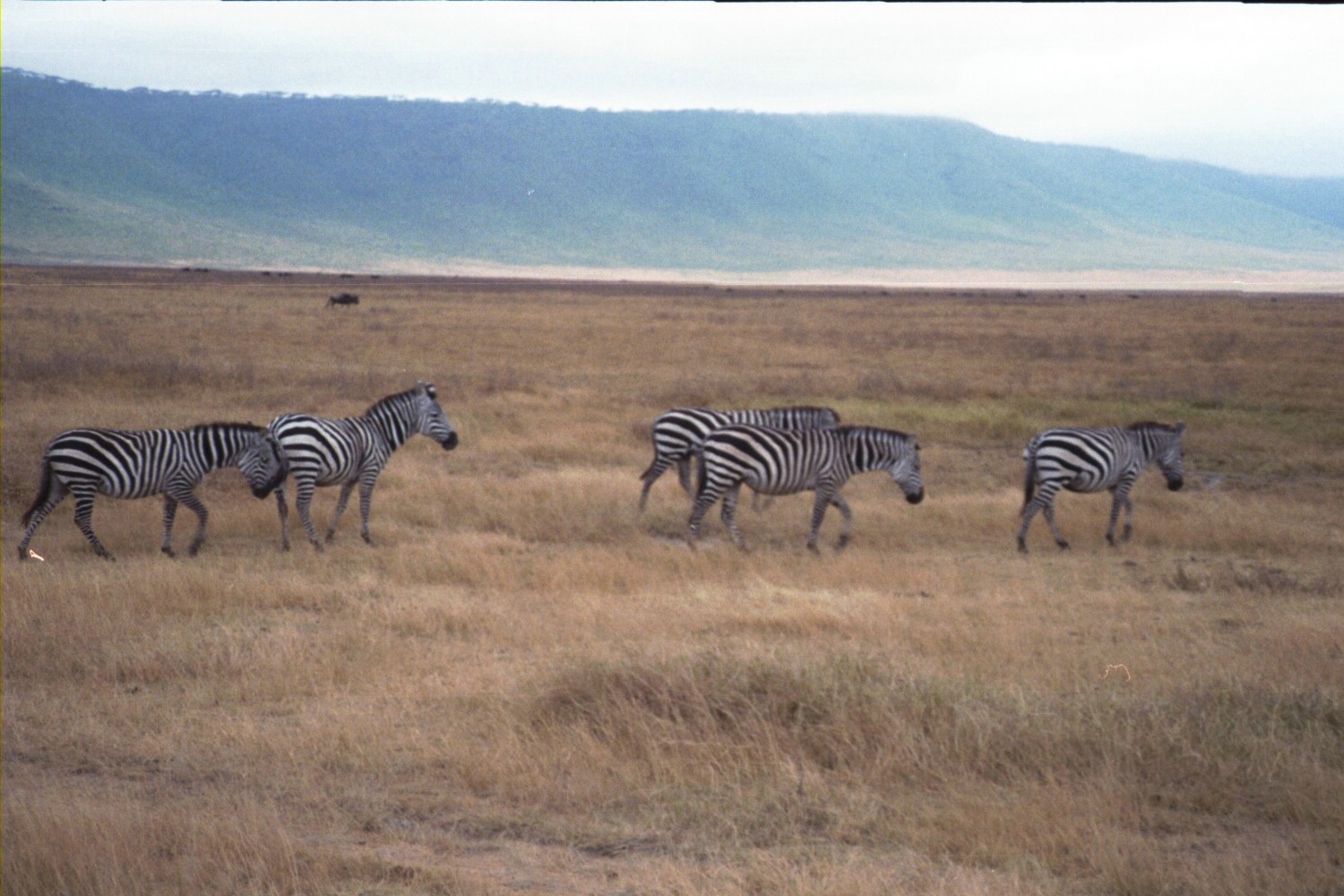 |
| Notice how this one stays primly on a narrow path. |
| This mom kept between us and her baby. |
| "Are you sure we're going in the right direction?" |
| Here's our naturalist, Augustine, with the senior member of our group. Dorothy, who is a very young 88-year-old, was good company during our many hours in the cruiser. |
| Normally we were not allowed to leave our vehicles during game drives, but there was actually a rest stop in the crater, tucked discretely in a wooded area. |
| Thousands of beautiful antelopes live in the crater. Here you see Thomson's gazelles on the left and a Grant's gazelle above. |
| We were lucky to see a black rino, although not up close. |
| The hyenas we saw were all quite nasty and scary looking. |
| We awoke the next morning to a stunning sunrise with fluffy white clouds overflowing from the crater. After breakfast we were on our way to Olduvai Gorge and a Maasai Village. |
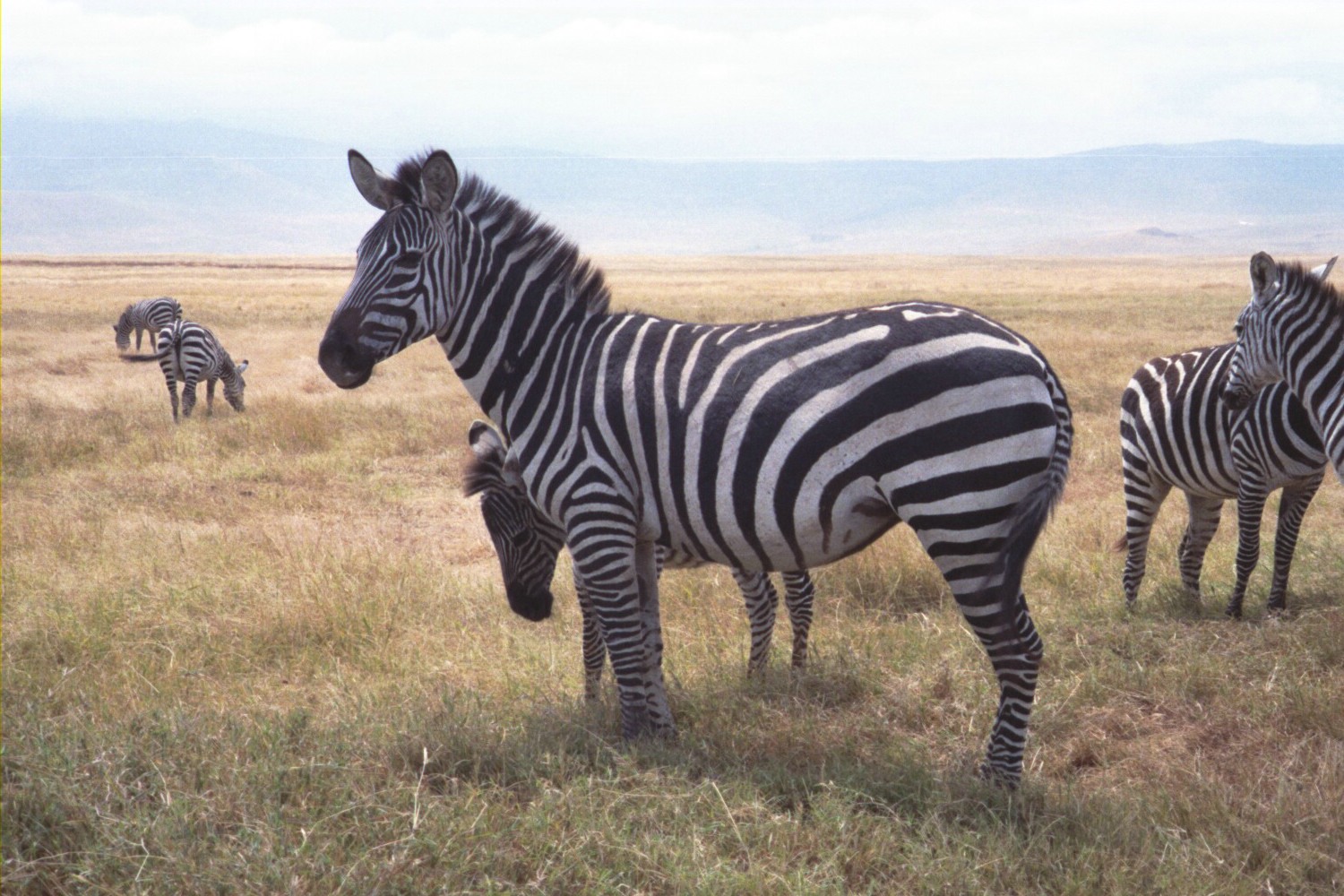 |
| Go to Olduvai and the Maasai |
| Return to the first page |